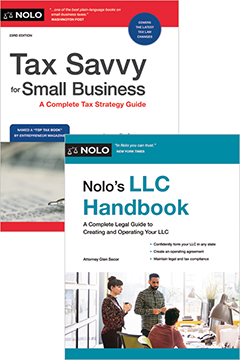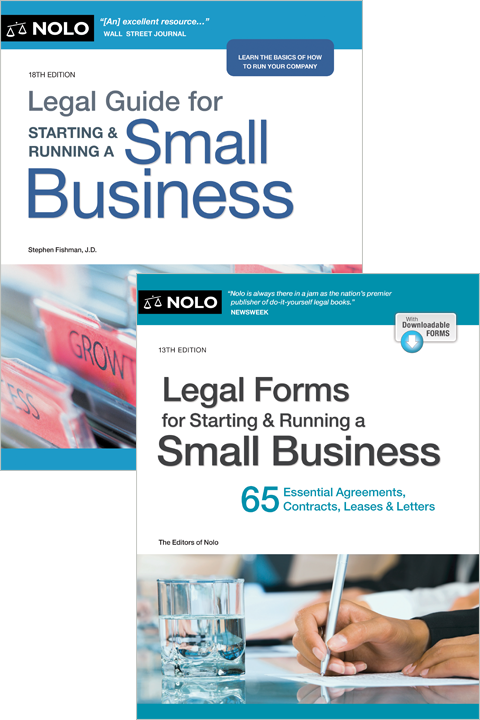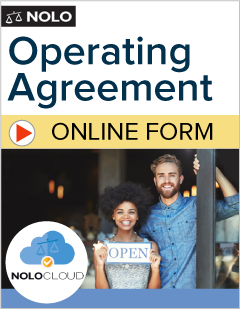Find out what's involved if you decide you want to convert your sole proprietorship business (or a partnership) to an SMLLC.
Many people who form a single-member limited liability company (SMLLC) already have a business and simply want to change that business's legal form. In most cases, the pre-existing business is not incorporated and is, in fact, a sole proprietorship. However, other possibilities also exist, such as where a partnership ends and one of the partners chooses to continue the business on his or her own.
Converting from a Sole Proprietorship
Converting a sole proprietorship to an SMLLC primarily involves preparing two key documents: The articles of organization and the operating agreement. These are the same documents you need to prepare if you want to form a new SMLLC (or any LLC). Your articles of organization get filed with the secretary of state (or equivalent state office), and you keep your operating agreement at your place of business. Keep in mind that some states have a different name for the articles of organization. Also, the operating agreement, while recommended, is not strictly required.
After you've filed your articles of organization and prepared your operating agreement, your sole proprietorship's assets and liabilities generally will transfer directly to your new SMLLC without your needing to take any further steps. If your sole proprietorship had a single bank account with $10,000 in it, after the conversion that amount will be the property of your new SMLLC. Similarly, if your sole proprietorship had unpaid bills totaling (let's say) $3,000, those debts will now be owed by the new company. Be aware, however, that if your sole proprietorship had a loan, for example from a bank, you'll have to contact the lender to determine how—or if—that loan can be transferred to your newly-formed SMLLC.
There also are special rules regarding whether a sole proprietorship converting to an SMLLC needs a new employer identification number (EIN). In most cases, there are two points you'll need to pay attention to. First, if you've never had an EIN, or only had one under your own name, you'll need a new EIN for your SMLLC if:
- you're paying wages to employees; or
- you're paying excise taxes.
Second, you'll also need to obtain an EIN if you choose to have your new SMLLC taxed as a corporation.
Converting from a Partnership
If you're ending a partnership and now going it alone, then, just as with converting from a sole proprietorship, you'll need to file articles of organization and prepare and keep an operating agreement. However, unlike converting from a sole proprietorship, before you file to form an SMLLC you first need to properly close down—or, in legal lingo, dissolve and wind up—your partnership. When dissolving and winding up, you'll want to make sure that each of your soon-to-be-former partners receives his or her full share of the partnership's assets, and also that all debts, liabilities, and claims are properly assigned or resolved. This last point is particularly important: You want to make sure that down the road, after you're running an SMLLC and ostensibly covered by limited liability, you aren't unexpectedly hit with a lawsuit or claim for money against you personally because the matter somehow was left over from the partnership.
To help ensure pre-existing obligations are resolved, it's generally a good idea to file a partnership dissolution form with your secretary of state (or equivalent state office). Similarly, it often makes sense to publish a notice of the termination of the partnership. By taking these steps you'll let creditors know that the partnership no longer exists. These steps can help limit your own liability if someone comes along later looking to collect on an old debt—possibly one incurred, unbeknownst to you, by a former partner. You may want to work with a lawyer to make sure you fully and properly dissolve your pre-existing partnership before establishing your SMLLC.
One other point to keep in mind when moving from a partnership to an SMLLC is that you'll handle your taxes slightly differently. In both cases, the default situation is that the business itself doesn't pay taxes, and instead all tax liability passes through directly to you (so-called pass-through taxation). However, where a partnership needs to file a partnership tax return (IRS Form 1065), an SMLLC filing as a sole proprietorship uses IRS Schedule C attached to the single member's personal federal tax return. Also, as part of winding up, you'll need to make sure all taxes owed by the partnership are properly paid; because a partnership involves more than one person, and an SMLLC has just one owner, generally you can't simply carry over tax obligations to the new company.
Additional Conversion Tasks
Conversions involve more tasks than are covered here. Even in the simplest case of converting a sole proprietorship to an SMLLC, taking care of the articles of organization and operating agreement isn't the end of the process. Apart from possibly needing to obtain an EIN as discussed above, you'll also need to update the name on all relevant business documents. This includes things like bank accounts, insurance policies, licenses and permits, titles to vehicles or other important personal property, and any documents, including titles, relating to real estate owned by the business. Beyond that, you should also make sure to inform customers, clients, vendors, and others that deal with your business of the change.
For more information on tax obligations, check out irs.gov. For information on a wide array of other SMLLC matters, check out the other articles in the SMLLC section of Nolo's website.



